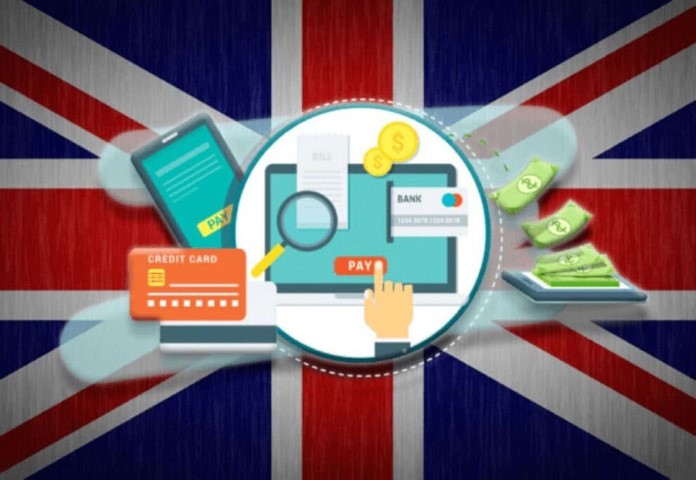For as long as casinos have existed, players have wondered if the house is truly playing fair. When you walk into a physical casino, you see the cards being shuffled, the roulette ball spinning, the dice thrown in plain sight. Online, however, everything is digital—random number generators determine every spin, deal, or roll, all hidden behind lines of code and remote servers. So, what guarantees do you have that an online casino isn’t secretly stacking the odds against you?
This is where the concept of provably fair gaming has changed the industry forever. First emerging in the world of crypto casinos, provably fair technology now powers some of the world’s most reputable online casinos. But what does “provably fair” actually mean? How does it work? And why is it quickly becoming a baseline expectation for smart, security-conscious players in 2025?
The Trust Problem in Online Gambling
Traditional online gambling platforms have always operated in a space that relies heavily on trust. Casinos assure players that their random number generators (RNGs) are fair and unmanipulated, often pointing to third-party audits as proof. But unless you’re willing to take these promises at face value—or sift through dense technical audits—there’s little a player can do to independently verify the fairness of a game in real time.
This problem isn’t just academic. Over the past two decades, stories of rigged games, altered payout percentages, and even outright scams have periodically rocked the iGaming industry. While regulation and auditing have improved, skepticism remains—especially as online casinos become more international and harder for a single government to oversee.
What Is “Provably Fair” and Why Does It Matter?
“Provably fair” refers to a transparent system that uses cryptography to allow both the player and the casino to prove mathematically that the results of a game round were fair and untampered. In other words, it’s not just about casinos claiming to be fair—it’s about making it technically impossible to cheat, and providing the tools for anyone to check for themselves.
The system is most common at crypto casinos, where transparency and tech-savvy users are the norm. But its adoption is quickly spreading to mainstream gambling operators worldwide, especially as more players demand transparency and control over their gaming experience.
The Mechanics: How Provably Fair Technology Actually Works
The provably fair process is powered by cryptographic algorithms similar to those that secure Bitcoin and other digital currencies. Here’s how a typical round works, step by step:
1. The Casino Generates a “Server Seed”
Before you even start playing, the casino creates a secret random string of numbers and letters called a server seed. This seed is the foundation for the game’s randomness and is kept hidden from the player until the round ends. To ensure it can’t be changed later, the casino shares a “hash” (think of it as a digital fingerprint) of the seed with the player up front.
2. The Player Adds a “Client Seed”
To prevent the casino from controlling the outcome, the player (or their browser) generates a client seed—an additional random string that mixes with the server seed to determine the game’s results. This client seed is visible to both parties, and in some systems, players can even set their own.
3. The Nonce: Making Every Round Unique
Each round gets a unique “nonce” (a number that only ever appears once, incremented every game). The nonce, along with the two seeds, ensures that every round is mathematically unique and verifiable.
4. Playing the Game and Seeing the Result
When the game is played, these three components—the server seed, client seed, and nonce—are combined through a cryptographic function (like SHA-256) to produce the game outcome: which cards are drawn, which numbers land, where the roulette ball stops, etc.
5. Verifying the Fairness
Once the round ends, the casino reveals the original server seed. The player can then check that the outcome they saw matches what the cryptographic process would have produced, given the two seeds and the nonce. Many casinos provide a “verify” button right in the game interface, or players can use open-source tools to check it themselves.
What Does Provably Fair Look Like in Practice?
If you’re new to crypto or online gambling, the above might sound complex—but the real-world application is simple and player-friendly. At reputable sites, every slot, dice, or card game comes with a direct link or tool to “verify fairness” after each round. Clicking this button brings up a panel with all the technical details: server seed, client seed, nonce, and the cryptographic hash. Players can check these details instantly or copy them into a third-party tool for extra peace of mind.
Some sites even publish a public record of every game round, letting anyone audit past results to ensure there’s no pattern of manipulation or tampering. This has created a new era of transparency in iGaming—one where the old adage of “the house always wins” doesn’t mean the house can ever cheat.
Why Provably Fair Has Exploded in Popularity
The biggest drivers behind provably fair’s rise are player demand and regulatory evolution. Crypto users are famously skeptical and privacy-focused; they don’t trust centralized authorities or “just trust us” claims. As these players flood into online casinos, they demand tools that let them verify outcomes for themselves. Meanwhile, regulators in Europe, the US, and Asia are increasingly requiring greater transparency and fairness in gaming, making provably fair systems an attractive compliance solution for casino operators.
Additionally, many high-stakes players have begun to view provably fair verification as non-negotiable—much like SSL security or two-factor authentication in banking. No one wants to risk high-value crypto or fiat bets on a game they can’t independently audit.
Key Benefits of Provably Fair for Players
1. Total Transparency: You can check any spin, hand, or round at any time. There’s no need to trust the casino’s word or even rely solely on third-party auditors.
2. Real-Time Verification: Many casinos allow you to verify the outcome instantly, even while playing. Suspicious of a losing streak? Check the math for yourself.
3. Stronger Player Protection: If a site ever tried to change a result after the fact, the cryptographic hash would not match, revealing cheating instantly.
4. Boosts Trust & Reputation: Operators who use provably fair tech see higher retention, more referrals, and less skepticism from players.
5. Crypto-Native & Global: Provably fair systems are borderless, making them ideal for a global audience of crypto users who demand both speed and security.
Are There Any Downsides or Limitations?
While provably fair systems are a massive leap forward, they’re not a cure-all. Here are a few things to keep in mind:
- Provably fair only guarantees the randomness and fairness of game outcomes, not that the site is licensed, pays withdrawals, or protects your personal data.
- Some traditional casino games (like live dealer tables) can’t be fully provably fair yet, because real-world elements—like a human dealer—can’t be hashed or algorithmically verified.
- The system depends on players actually using the verification tools; those who don’t check won’t spot a rogue operator instantly, though bad actors are quickly exposed in online forums.
- Technical knowledge helps, but most sites simplify the process to one click, so anyone can use it.
How to Spot a Real Provably Fair Casino
Not every site advertising “provably fair” is created equal. Here’s how to spot the real deal:
- Look for games that clearly display both client and server seeds before play, with a visible hash of the server seed published in advance.
- The casino should provide a simple way to see and verify the result after every round, with open-source or public tools to check their cryptographic algorithms.
- Reputable casinos explain their provably fair system in clear language and allow users to set or randomize their client seed for extra assurance.
- Always check for a valid gaming license and public payout audits alongside provably fair features.
Regulatory Impact: Will Provably Fair Become the Global Standard?
As more regulators look to crack down on unfair practices in iGaming, provably fair is increasingly being discussed as the “gold standard” for technical compliance. Jurisdictions in Europe and Latin America have begun drafting standards that encourage, or even require, provably fair verification for crypto games. Industry groups see this as a win-win: better protection for players, and less risk for honest operators.
As with most new technology, adoption is fastest where there’s the greatest need for trust—meaning crypto-first casinos are leading the way. But mainstream operators are following suit, adding provably fair features to slots, dice, and even table games.
Provably Fair Game Types: Where to Find Them
Most provably fair games started with simple, math-driven formats like dice and crash games. But today, you’ll find the system powering a huge range of crypto slots, video poker, blackjack, roulette, and even some scratchcards. Some of the most popular provably fair platforms include:
These platforms make it easy to switch between demo (free play) and real play, and every spin or result can be checked for fairness on demand.
The Future: Beyond Crypto, Into All Online Gambling
Looking ahead, provably fair technology is likely to become a baseline expectation for all digital gambling. As more mainstream brands enter the crypto gaming space, competition will force even fiat-only casinos to offer greater transparency. Players are more informed, more demanding, and less willing to accept vague promises from the house. Operators who embrace this will win loyalty—and those who don’t risk being left behind.
Developers are also exploring ways to bring provably fair verification into sports betting, live games, and new formats like esports and virtual reality gambling. Imagine watching a VR roulette wheel and checking the fairness of the result with a click—this is the future provably fair is building.



